The works exhibited in 'The discreet charm of bullshit' during Are Performing Arts Festival
Dallan Gallery, yerevan, Armenia, May 26- June 03, 2019
Artists: Grigor Khachatryan, Edik Boghosian
Curator: Nazareth Karoyan
Dallan Gallery, yerevan, Armenia, May 26- June 03, 2019
Artists: Grigor Khachatryan, Edik Boghosian
Curator: Nazareth Karoyan
Banners, advertising and information billboards, political slogans, posters, references, guidelines- any text with high visibility always is a reference to the city. Previously printed, currently, electronic lines running on various screens and tablets convey a message in each step. If we add also public art, street art, and various graffiti that cover the walls of buildings, we can say that the city is full of textual and visual signs. They constantly appear and disappear, providing visual information and communication of urban life about economic, political, ideological and cultural spheres. The city itself is a text with a constantly changing city plan.
The work with text has a long tradition in the history of fine arts. Emerging out of Dada movement among other thematic and expressive discoveries, it becomes the only material to create an image in Conceptual Art. Removed from the context, the text refers to itself, and as a result, is translated and turned into an image. In the history of Armenian contemporary art, we see the meeting of the text and the image in the “3rd Floor” Art Movement. At the earliest stage of its work, the group of artists “ACT” was working only with the text.
The meeting of Grigor Khachatryan and Edik Boghosian in one exhibition is conditioned by the common experience of working with the text. Both are multidisciplinary artists. They work in the fields of sculpture and performance, as well as video. But if Edik Boghosian’s work is filled with social philosophical motives for existence and survival, Grigor Khachatryan is characterized by political criticism. In the production of meaning both apply to absurdity. In Edik’s case, it is mostly about the mind while Grigor Khachatryan adds to it also action. By absurdity, they express an ironic attitude to the phenomenon. But if Boghosian’s irony is tied to the bitterness of life’s vanity, Grigor Khachatryan’s irony, coming out of boards of institutions with ridiculous functions, is biting and painful. It’s nothing else but “correctional work piece.” There is another feature also that unites these two artists - in their ironic speech they are both discreet. In this discreet bullshit, there is, apparently, a charm which is hidden but distinct.
The work with text has a long tradition in the history of fine arts. Emerging out of Dada movement among other thematic and expressive discoveries, it becomes the only material to create an image in Conceptual Art. Removed from the context, the text refers to itself, and as a result, is translated and turned into an image. In the history of Armenian contemporary art, we see the meeting of the text and the image in the “3rd Floor” Art Movement. At the earliest stage of its work, the group of artists “ACT” was working only with the text.
The meeting of Grigor Khachatryan and Edik Boghosian in one exhibition is conditioned by the common experience of working with the text. Both are multidisciplinary artists. They work in the fields of sculpture and performance, as well as video. But if Edik Boghosian’s work is filled with social philosophical motives for existence and survival, Grigor Khachatryan is characterized by political criticism. In the production of meaning both apply to absurdity. In Edik’s case, it is mostly about the mind while Grigor Khachatryan adds to it also action. By absurdity, they express an ironic attitude to the phenomenon. But if Boghosian’s irony is tied to the bitterness of life’s vanity, Grigor Khachatryan’s irony, coming out of boards of institutions with ridiculous functions, is biting and painful. It’s nothing else but “correctional work piece.” There is another feature also that unites these two artists - in their ironic speech they are both discreet. In this discreet bullshit, there is, apparently, a charm which is hidden but distinct.
Nazareth Karoyan
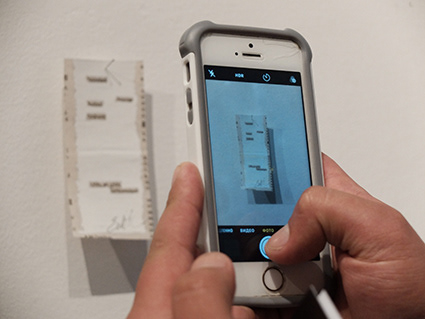
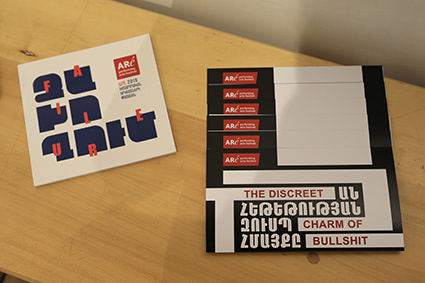
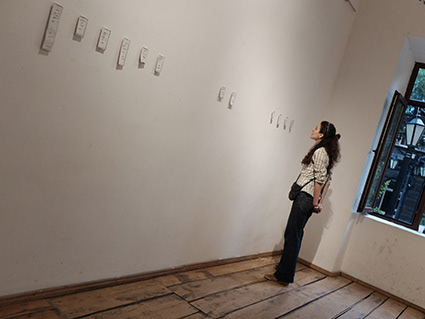
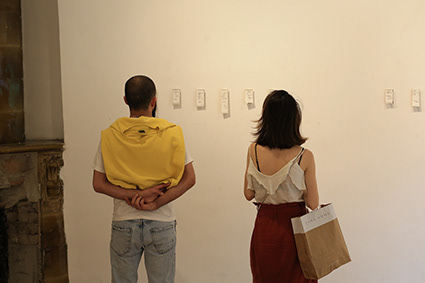
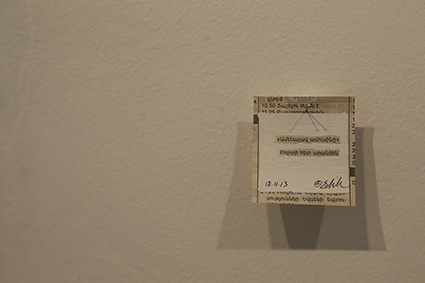
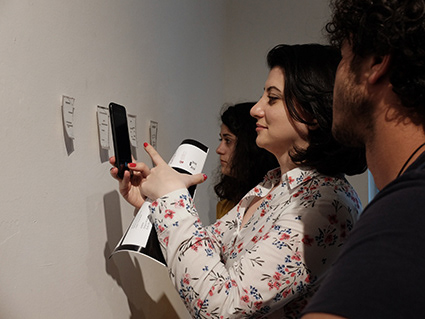
Event photos by Ed Tadevossian and Anush Kocharyan
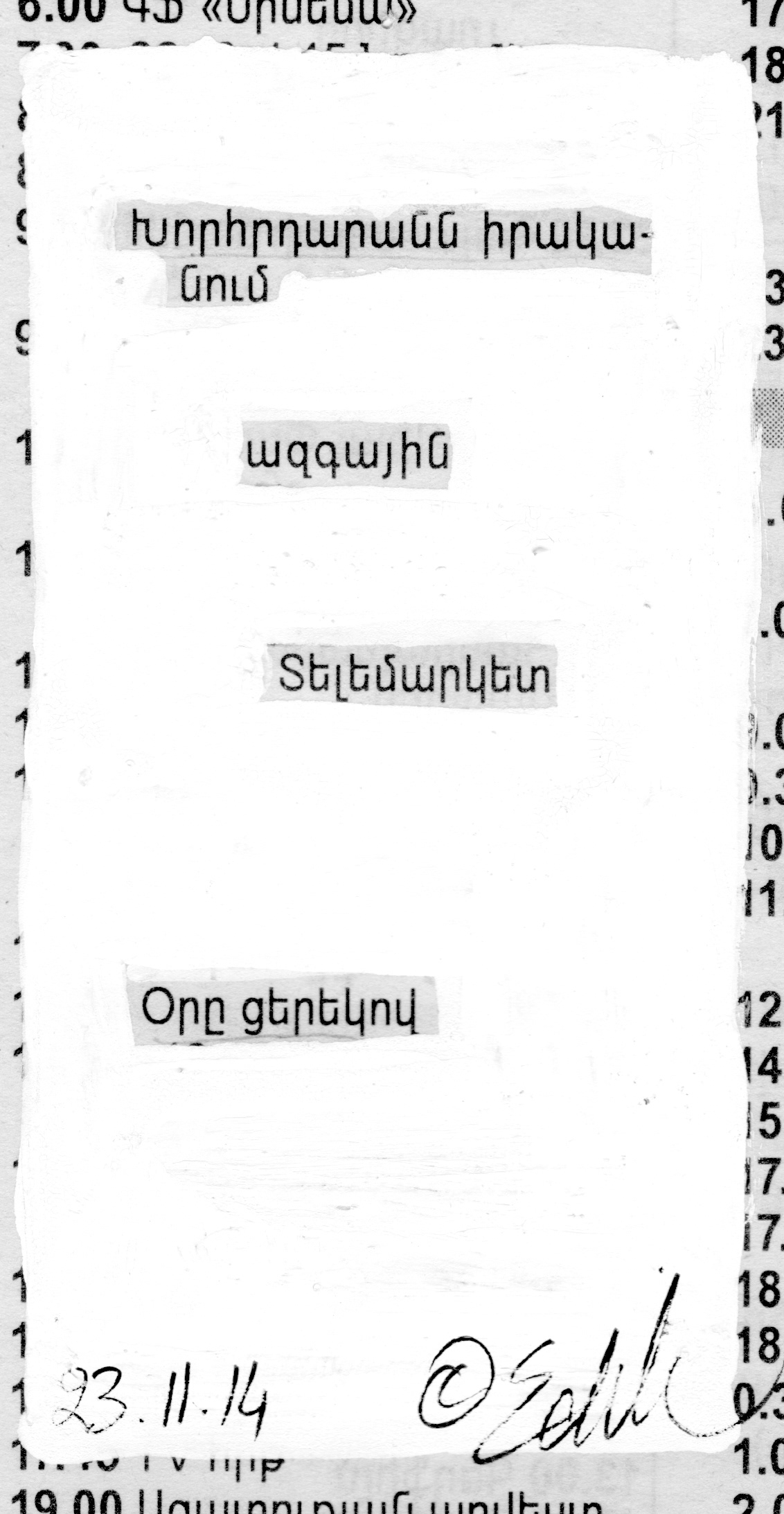

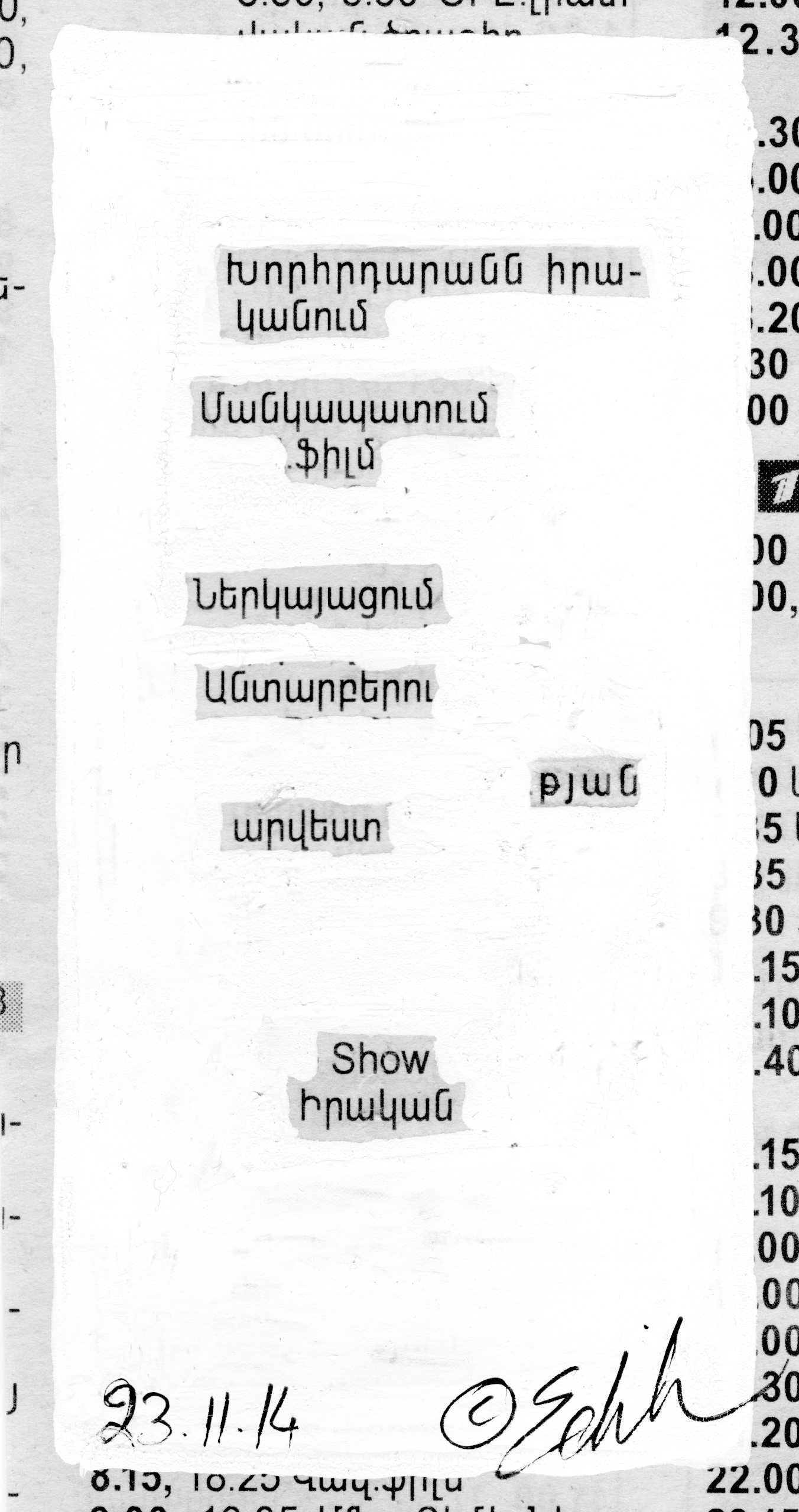



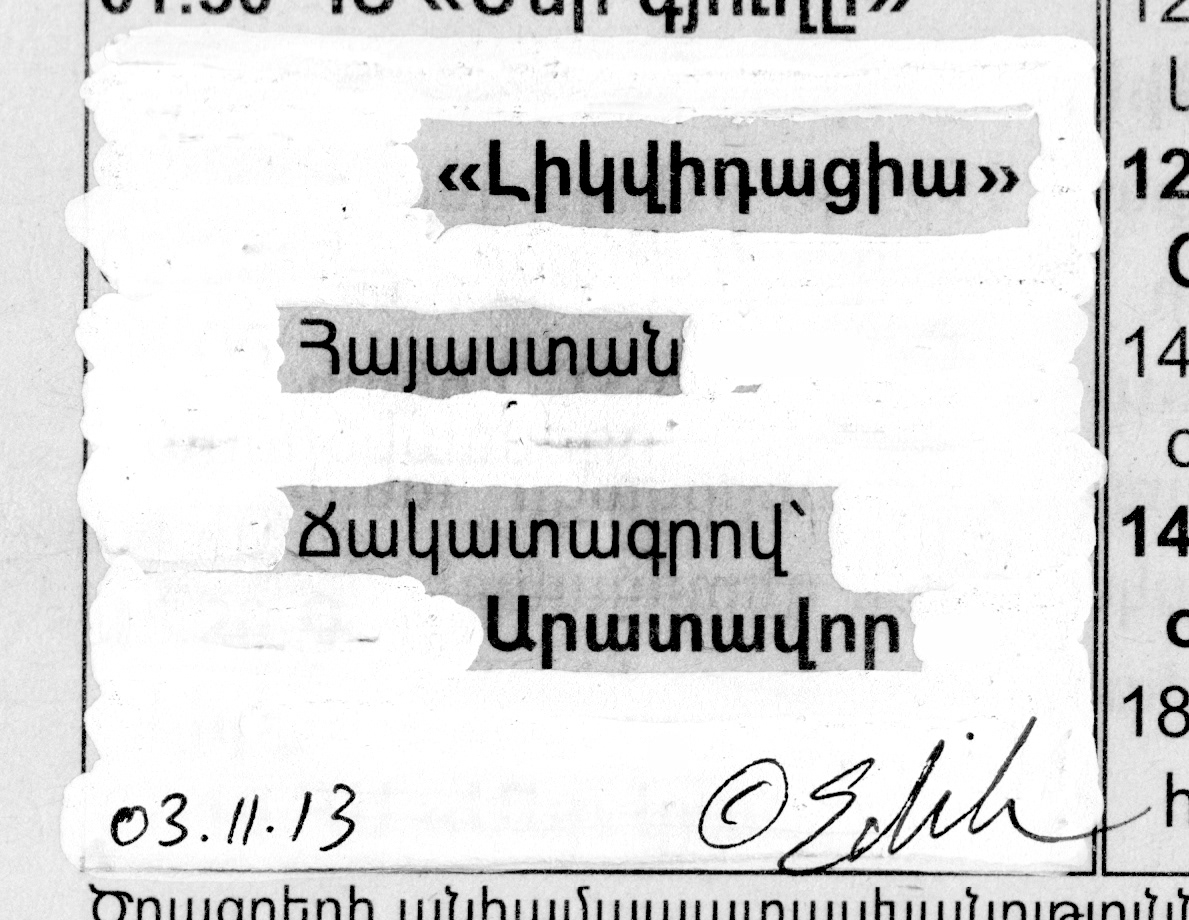
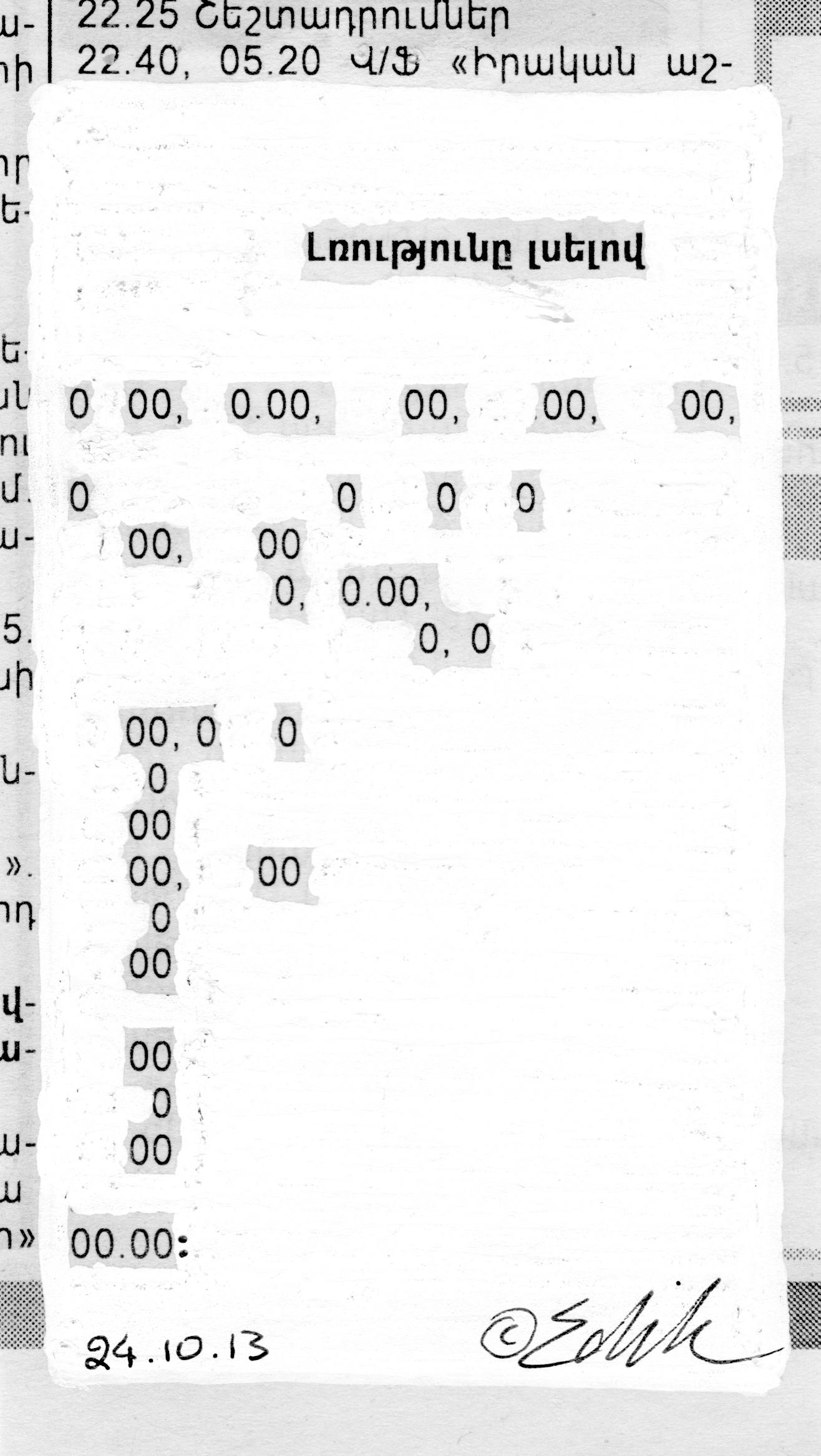
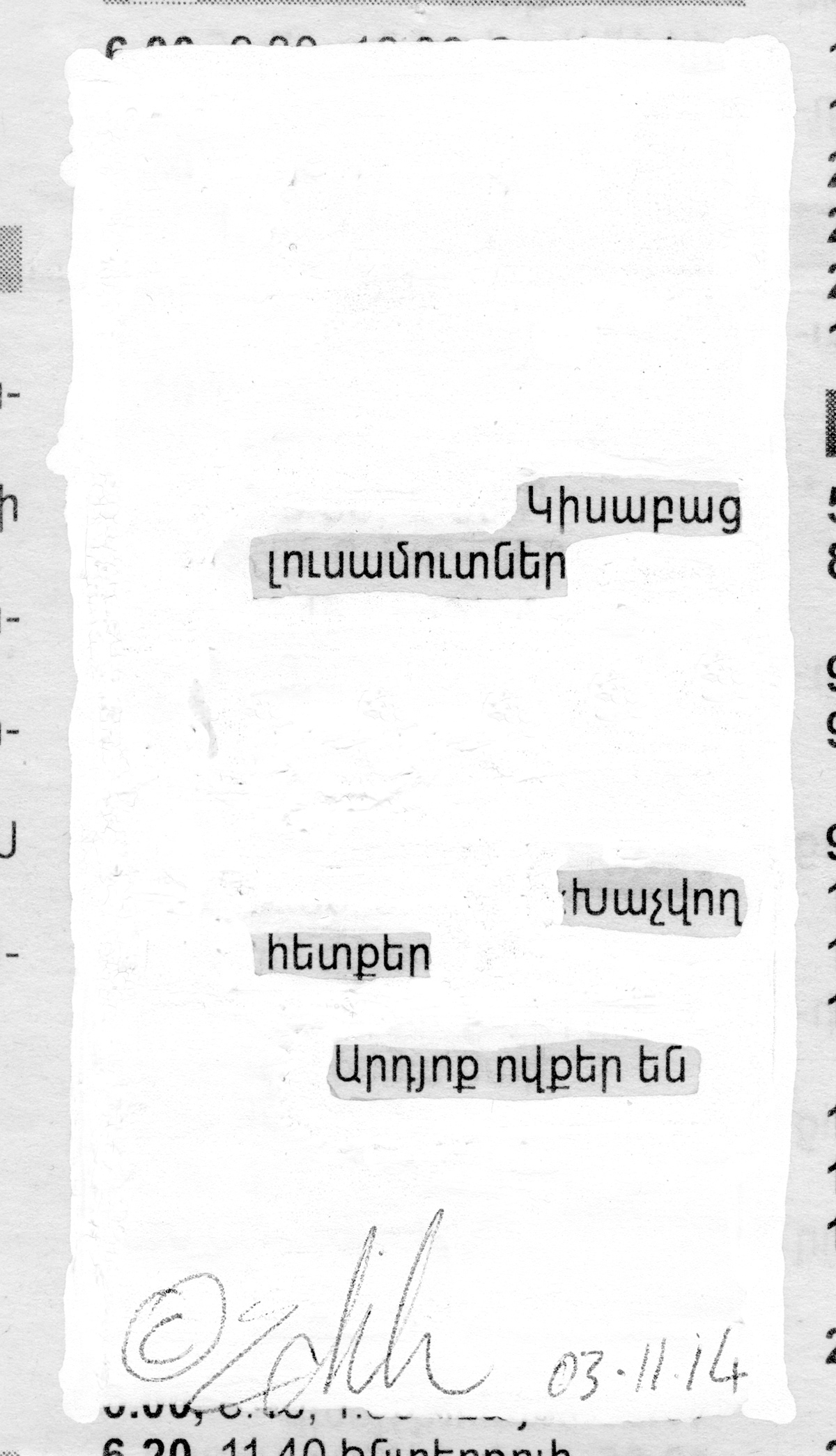
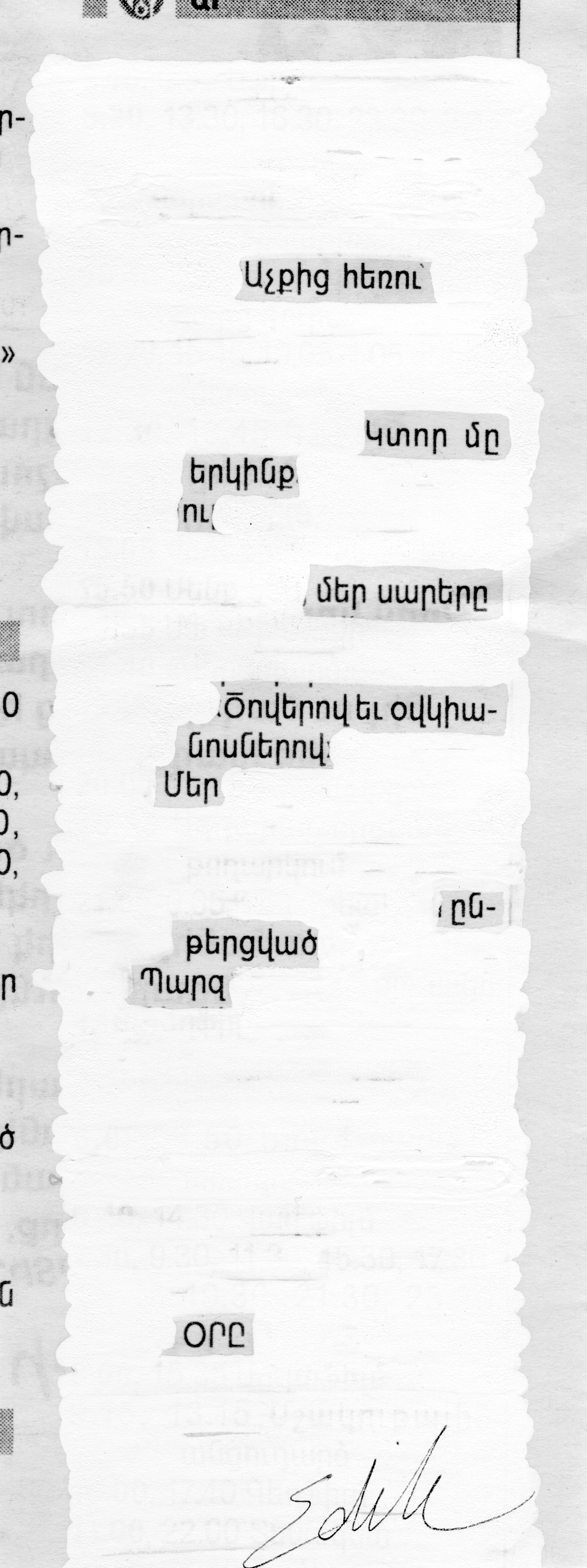
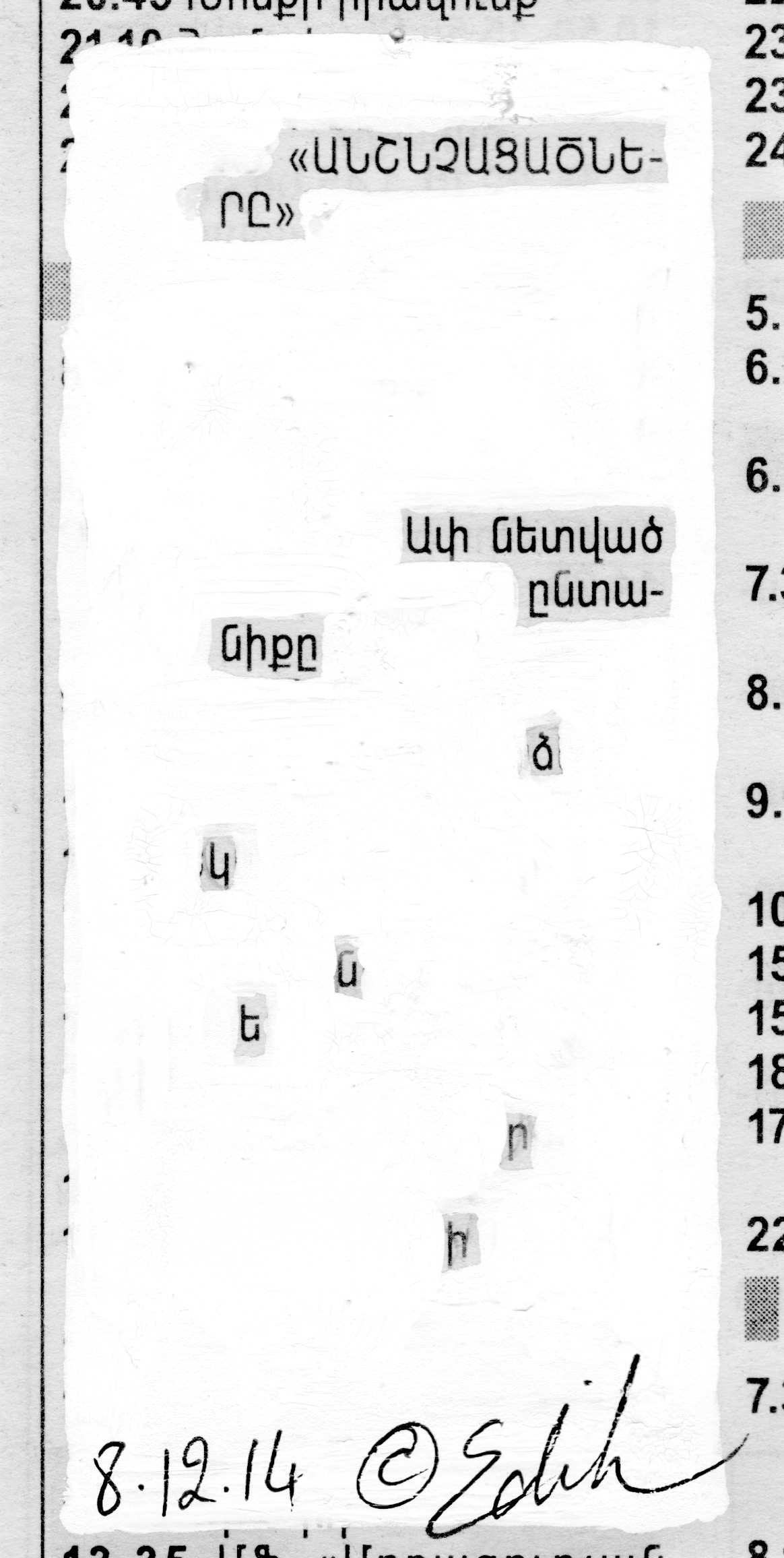
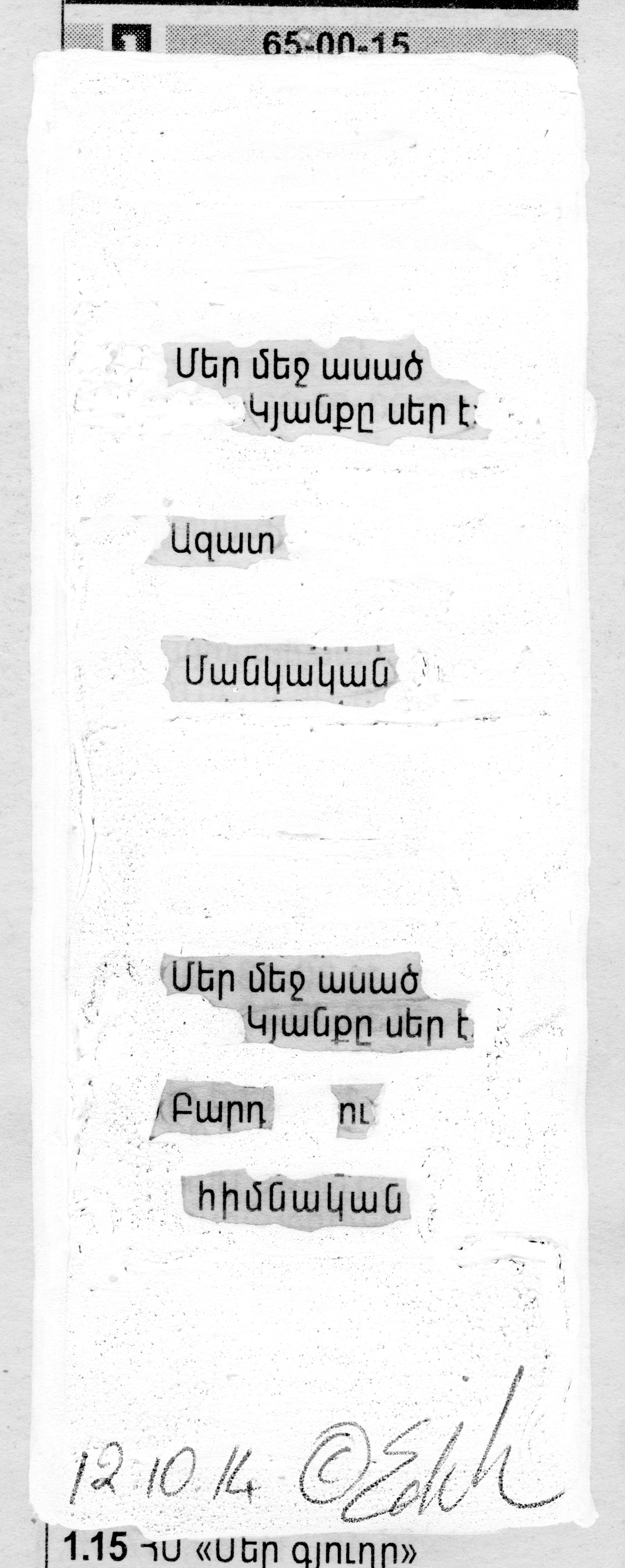
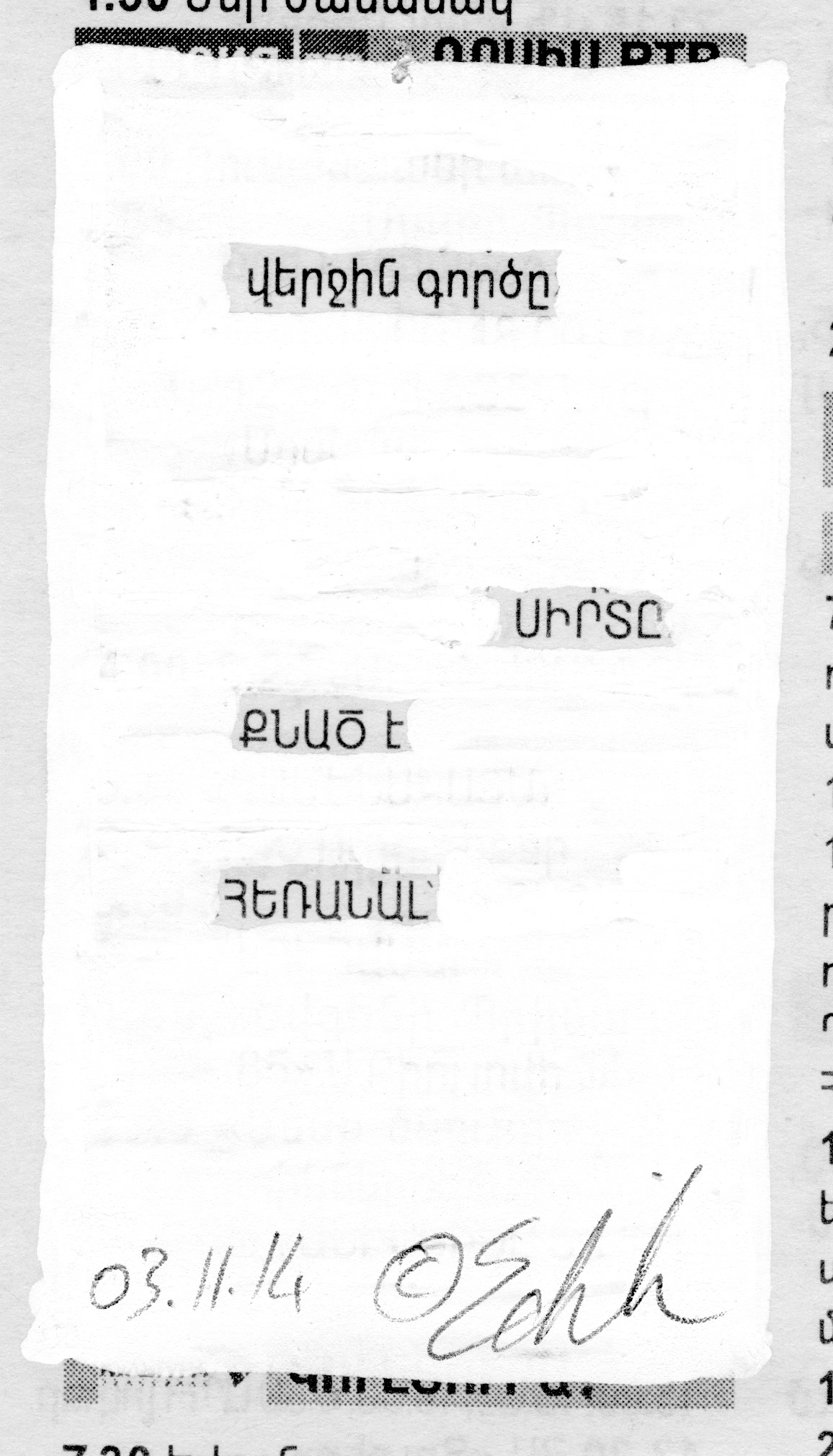
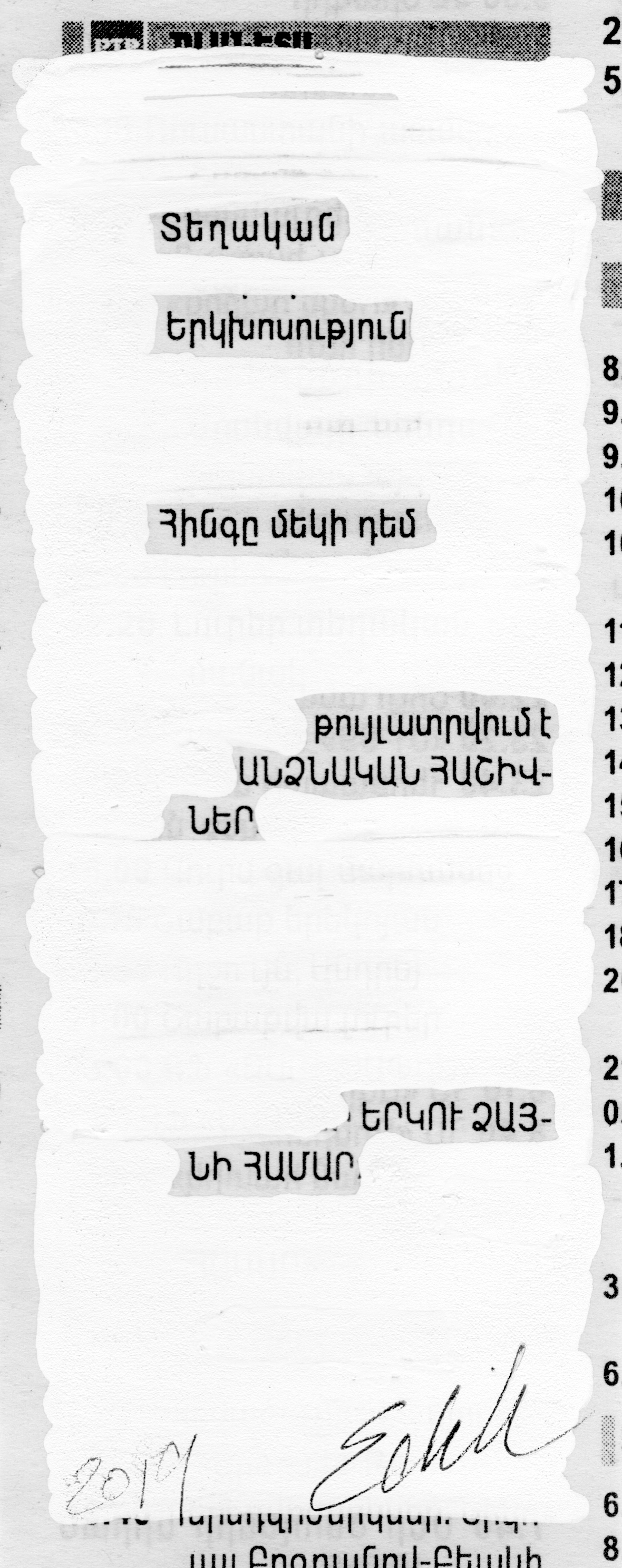

Newspaper, correction fluid, 2013-2019 (Language: Armenian)
